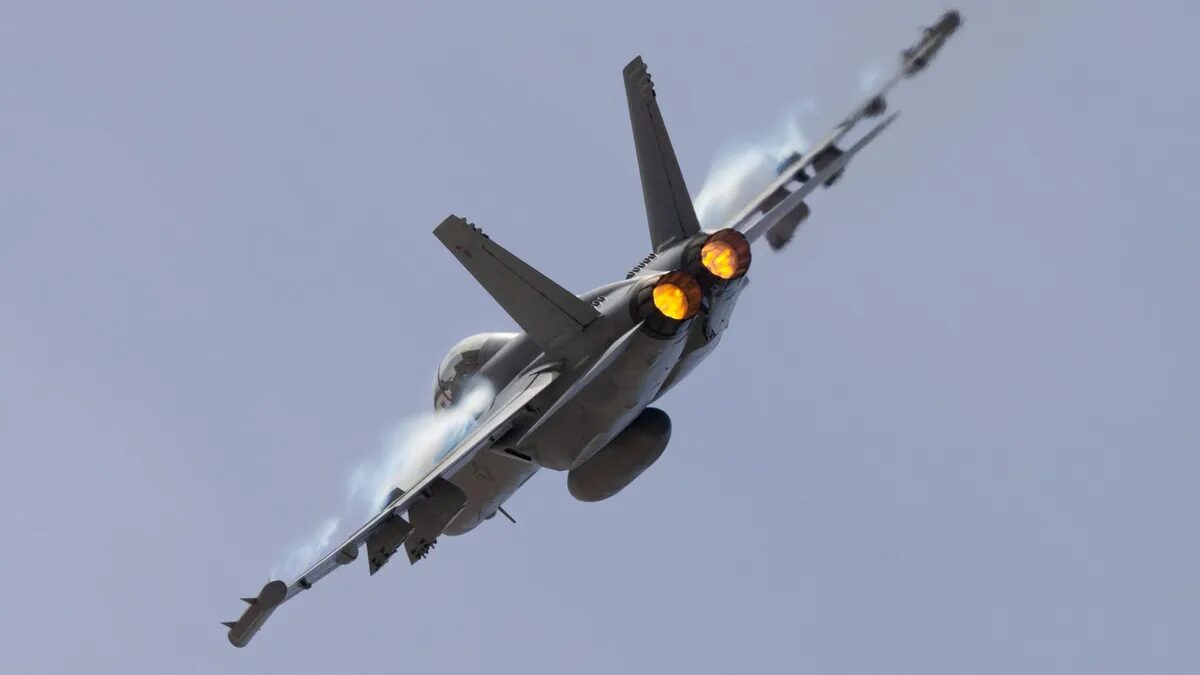
© rancho_runner/iStockIllustrative image to show a fighter jet with an electronic warfare pod.
Researchers at the Southeast University in Nanjiang China have revealed the design of their new generation electronic warfare (EW) weapon in a peer-reviewed journal.
Unlike other EW weapons known so far, the Chinese-developed weapon can allegedly launch multiple beams of electromagnetic waves from a single antenna and target multiple objects simultaneously.Electronic warfare is widely accepted as the next frontier of warfare which is seeing intense technological development. Failure to dominate the deployment of the technology is seen as a precursor to losing territorial ground.
Advanced EW weapons are capable of suppressing weapons, and radars as well as adversarial ability to communicate, navigate and collect information in contested areas.
Electronic warfare pods resemble missiles mounted under the wing of a fighter jet and have been
seen on both Russian as well as US advanced aircraft. However, these devices have only shown the capability to suppress targets in one direction using high power. The device developed by Chinese researchers, though, is far superior in its ability.
China's new-gen EW weaponAccording to the
South China Morning Post (SCMP), the prototype images of the design revealed by Jiang Weixiang, a professor at Southeast University, and his team show a "honeycomb-like, open-ended and waveguide structure" antenna.
Typically, a modern EW weapon uses multiple units of transmitting and receiving antennae, which are controlled by a computer. While these units can work independently to engage different targets, when emitting electromagnetic waves, they end up with limited power and frequency ranges.
Jiang's team claims to have gained an edge through "sophisticated manipulation" of electromagnetic waves emitted by each unit wherein the frequency of suppression can be individually adjusted for each of its targets.While this is theoretically possible, the increase in the number of targets should lead to increased numerical processing that could potentially overwhelm the chips. To overcome this issue, the team has also
unveiled an algorithm that reduces the computational load.
The research findings were published in a peer-reviewed journal titled Journal of the University of Electronic Science and Technology of China, the
SCMP said in its report.
Like Israel's but differentThe claim made by the Chinese researchers is quite similar to one made by Israel Aerospace Industries regarding their EW weapon Scorpius-SP. Designed to reduce the threat to fighter jets, the weapon boasts the ability to counter threats from the air, land, or sea simultaneously.

© Israel Aerospace IndustriesIllustration of how Israel's Scorpius-SP EW Pod works
In June 2022, the technology was reportedly sold to an unnamed Asian country in a multi-million dollar deal. When designs of the antenna are compared, the China-developed technology looks distinctively different from Scorpius-PD
suggesting that it has been indigenously developed.
While the name
Southeast University may not ring a bell on the international university circuit, it is reportedly
an elite university in China and works closely with global technology names like Huawei. A large number of students passing out of the college join the company which has also honored professors from the university more than any other university in China, the SCMP report added.
It is not clear why the researchers chose to publish their research in a peer-reviewed journal instead of just supplying it to the Chinese military.
Comment: It's perhaps no coincidence that China is releasing this information so publicly, and putting it up for scrutiny, at this rather turbulent time on our planet; and this is just the technology that they're choosing to make public: